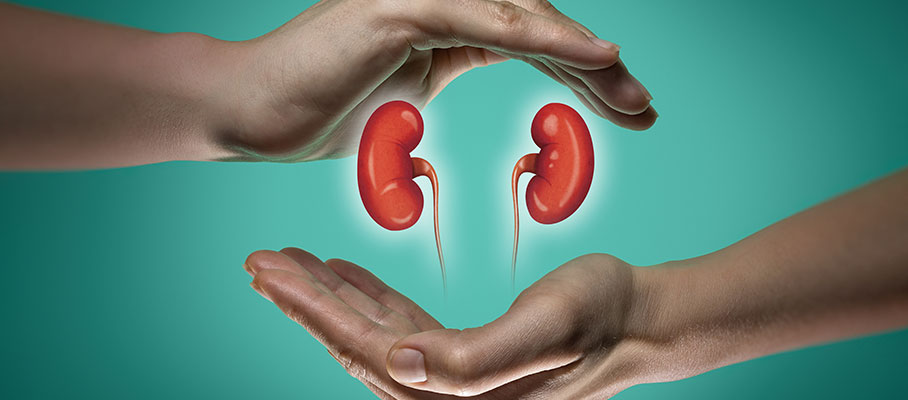2) Our author is Carlo Trinidad 🇵🇭 @hellokidneyMD, Kidney Doctor, Preventive Medicine + Patient Education specialist, Visual Abstract Editor 🎨, and avid Flozinator 💊. pic.twitter.com/4xwlvh0LOn
— @CKD_ce (@ckd_ce) November 21, 2022
4) Anemia is diagnosed when there is a #Hgb concentration of < 13.0 g/dL in ♂️ or <12.0 g/dL in ♀️ (@WHO). It is a common complication in #CKD and is associated with:
— @CKD_ce (@ckd_ce) November 21, 2022
⚡⬇️ Quality of life
⚡⬆️Cardiovascular events
⚡⬆️Hospitalization
⚡⬆️Mortality
🔗🔓https://t.co/4SE1tXwkbl
6) What is the most commonly encountered reversible cause of chronic anemia in #CKD patients?
— @CKD_ce (@ckd_ce) November 21, 2022
8a) Absolute iron deficiency is the presence of low levels of circulating iron (reflected by #transferrin, a glycoprotein that transports iron) & low levels of iron stores (represented by #ferritin).
— @CKD_ce (@ckd_ce) November 21, 2022
9) Functional iron deficiency happens where there is inadequate circulating iron despite adequate (or even elevated) iron stores. In states of #inflammation like #CKD, #hepcidin (key iron homeostasis regulator) is increased.
— @CKD_ce (@ckd_ce) November 21, 2022
👉🏼🔓https://t.co/RaAVCVSzhw pic.twitter.com/bwaBDaJaiZ
11) In #CKD, there is a relative #EPO deficiency due to ⬇️EPO production by the kidneys & impaired O2 sensing mechanism. The result is that EPO fails to rise appropriately in response to anemia, especially among patients with #eGFR of <40 mL/min.
— @CKD_ce (@ckd_ce) November 21, 2022
See 🔓 https://t.co/IonULhAyUf pic.twitter.com/pIXwea6fIt
13) So, a case: 53♂️ w/ CKD G4A2 from #DKD consults at clinic with Hgb=8.3 g/dL. He denies any symptoms & is not taking any meds for his anemia. What would be your next course of action?
— @CKD_ce (@ckd_ce) November 21, 2022
15) Back to the patient above (CKD G4A2), your workup ➡️low retic count w/ serum ferritin 300 ng/mL & #TSAT of 15%. Fecal immunochemical test was negative. What would be the best initial treatment for his anemia?
— @CKD_ce (@ckd_ce) November 21, 2022
17) #FIND_CKD showed that IV #FCM targeting ferritin levels of 400-600 ng/mL quickly reached and maintained Hgb levels compared to oral iron among ND-CKD. It delayed the need for #ESA initiation. Adverse events were similar between groups.
— @CKD_ce (@ckd_ce) November 21, 2022
👉🏼🔓https://t.co/4dgzOA7HbK pic.twitter.com/euJftoxLIT
19) Another case: 42♀️ with ESRD from #lupusnephritis recently started on #HD. You noted her low Hgb of 8.0 g/dL, TSAT 15% & ferritin 200 ng/mL. She was taking ferrous sulfate for her anemia for the past 6 mos. What is your next course of action for her anemia?
— @CKD_ce (@ckd_ce) November 21, 2022
21) Welcome back! You are learning about #CKD-associated anemia from @hellokidneyMD, while you earn 🆓CE/#CME! Follow this 🧵 and learn'n'earn!
— @CKD_ce (@ckd_ce) November 22, 2022
See other tweetorials on #aCKD, still for credit, at https://t.co/vVMd9Hgpbz
23) The #PIVOTAL study showed that among dialysis patients, high-dose, proactive (vs. low-dose, reactive) IV iron administration was associated with:
— @CKD_ce (@ckd_ce) November 22, 2022
⬇️Primary end-point
⬇️ESA dosage
⬇️All-cause mortality
🟰 Infection rates
👉🏼🔓https://t.co/tXHneeilaw pic.twitter.com/5w2W99VQid
25) Back to our #HD patient. She was given 10 doses of 100 mg iron sucrose; repeat #TSAT & #ferritin showed 40% & 700 ng/mL, respectively. Her Hgb is now 9 g/dL. What is your next step in treating her anemia?
— @CKD_ce (@ckd_ce) November 22, 2022
27) How high should we target our hemoglobin? Should we correct to WNL? Our knowledge of the proper target comes from numerous RCTs summarized below. In essence, targeting a high or normal Hgb has no significant advantages and may in fact ⬆️ harm. pic.twitter.com/zSgxFXgSmL
— @CKD_ce (@ckd_ce) November 22, 2022
29) @goKDIGO provides a guide on initiation of erythropoiesis-stimulating agent (#ESA) therapy:
— @CKD_ce (@ckd_ce) November 22, 2022
⚡Initiate at Hgb <10 g/dL w/🎯Hgb of 10-11.5 g/dL
⚡Avoid use to maintain Hgb >11.5 g/dL
⚡Avoid use to increase Hgb >13 g/dL
⚠️Caution in active or history of malignancy & stroke
31) You started your 80 kg HD patient on epoetin alfa (50 IU/kg) 3x a week. Her Hgb of 9.0 g/dL did not increase so you ⬆️dose to 100 IU/kg) after 1 month. Repeat Hgb failed to increase. What is your next course of action?
— @CKD_ce (@ckd_ce) November 22, 2022
33) @goKDIGO lists possible causes of #ESA hyporesponsiveness. Strategies to address this are based on the cause:
— @CKD_ce (@ckd_ce) November 22, 2022
⚡Iron infusion
⚡Treat infection
⚡Increase dialysis dose
⚡Manage hyperPTH
⚡Endoscopy/colonoscopy pic.twitter.com/gV0UiApQjI
35) In this age of #ESA therapy, the current approach is to limit red cell transfusion in CKD due to its adverse effects
— @CKD_ce (@ckd_ce) November 22, 2022
⬆️Infection
⚠️Transfusion reactions
⚠️Iron overload
⚠️Allosensitization
⬇️Cost-effectiveness
👉https://t.co/PRPSAgogAY pic.twitter.com/Gfc4fYg9RD
37) Hypoxia-inducible factor-prolyl hydroxylase inhibitors (#HIF_PHIs) represent the latest class of drugs in the management of #aCKD. They stabilize the HIF-alpha-beta heterodimer, resulting in ⬆️#EPO gene expression and production.
— @CKD_ce (@ckd_ce) November 22, 2022
👉🏼🔓https://t.co/NMuTTIFlFd pic.twitter.com/ypQtAksnZr
39a) A summary of 3 #HIF_PHIs w/ Ph 3 data is below. While all are non-inferior to ESA for Hb⬆️ in both ND-CKD & DD-CKD, there are safety concerns for #vadastutat & #roxadustat that need to be addressed.
— @CKD_ce (@ckd_ce) November 22, 2022
👉🏼🔓https://t.co/VnukGvEseB pic.twitter.com/YnRKhMZBDw
40) And that's it! You can now go to https://t.co/TqKGveIgzF and claim your 🆓0.5h CE/#CME credit, and FOLLOW US here at @ckd_ce (and on @cardiomet_ce) for the best in #renal and #cardiometabolic education delivered wholly on Twitter!
— @CKD_ce (@ckd_ce) November 22, 2022
I am @hellokidneyMD. 🙏for joining!
